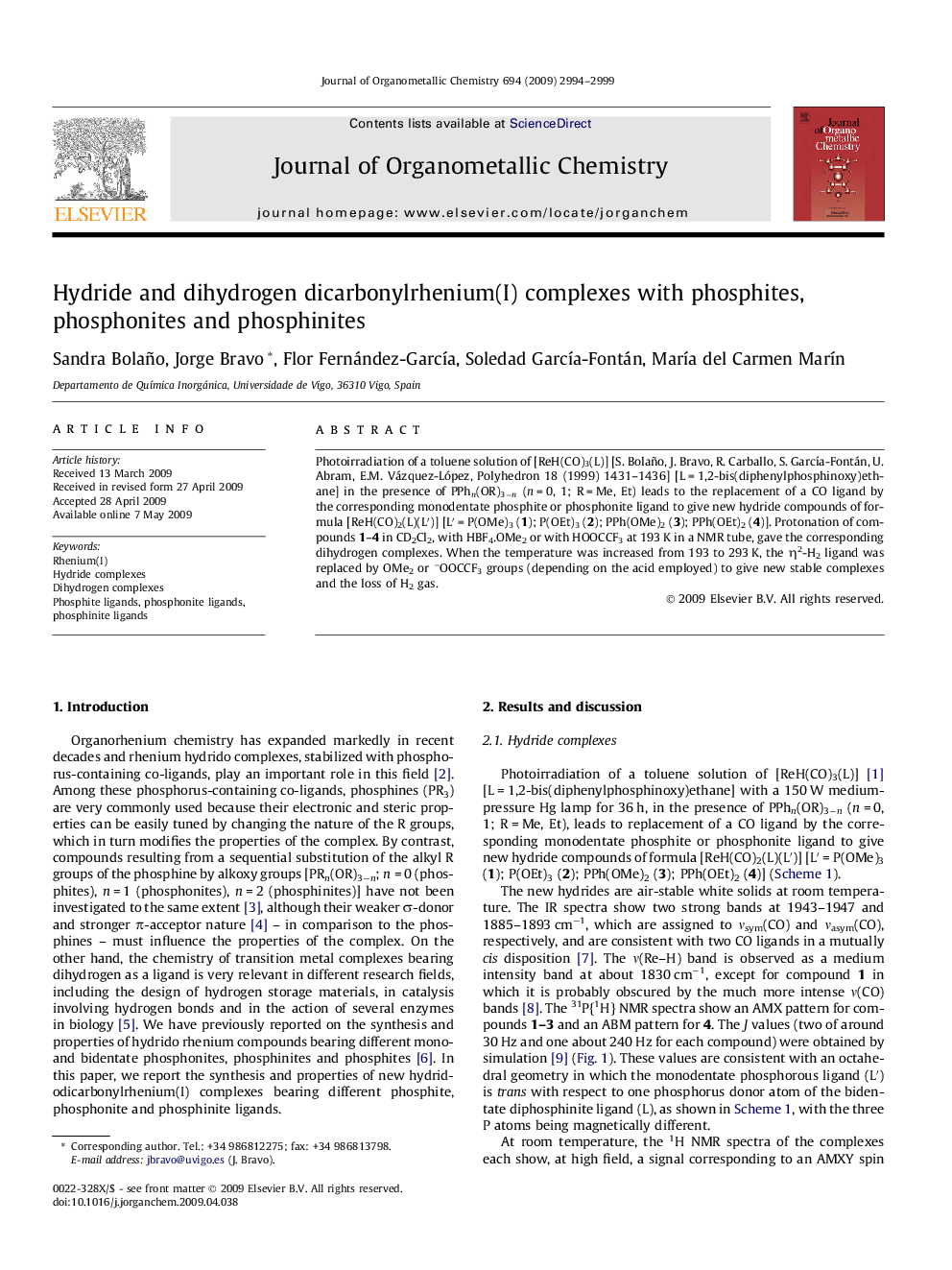| Article ID | Journal | Published Year | Pages | File Type |
|---|---|---|---|---|
| 1326385 | Journal of Organometallic Chemistry | 2009 | 6 Pages |
Photoirradiation of a toluene solution of [ReH(CO)3(L)] [S. Bolaño, J. Bravo, R. Carballo, S. García-Fontán, U. Abram, E.M. Vázquez-López, Polyhedron 18 (1999) 1431–1436] [L = 1,2-bis(diphenylphosphinoxy)ethane] in the presence of PPhn(OR)3−n (n = 0, 1; R = Me, Et) leads to the replacement of a CO ligand by the corresponding monodentate phosphite or phosphonite ligand to give new hydride compounds of formula [ReH(CO)2(L)(L′)] [L′ = P(OMe)3 (1); P(OEt)3 (2); PPh(OMe)2 (3); PPh(OEt)2 (4)]. Protonation of compounds 1–4 in CD2Cl2, with HBF4.OMe2 or with HOOCCF3 at 193 K in a NMR tube, gave the corresponding dihydrogen complexes. When the temperature was increased from 193 to 293 K, the η2-H2 ligand was replaced by OMe2 or −OOCCF3 groups (depending on the acid employed) to give new stable complexes and the loss of H2 gas.
Graphical abstractPhotoirradiation of a toluene solution of [ReH(CO)3(L)] [L = 1,2-bis(diphenylphosphinoxy)ethane] in the presence of PPhn(OR)3−n (n = 0, 1; R = Me, Et) gives new hydride compounds of formula [ReH(CO)2(L)(L′)] [L′ = P(OMe)3 (1); P(OEt)3 (2); PPh(OMe)2 (3); PPh(OEt)2 (4)]. Protonation of compounds 1–4 in CD2Cl2 gave the corresponding dihydrogen complexes.Figure optionsDownload full-size imageDownload as PowerPoint slide
